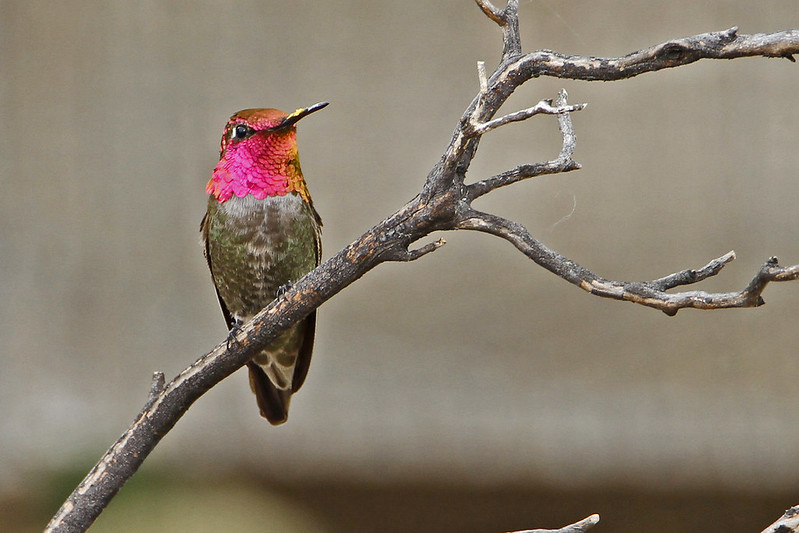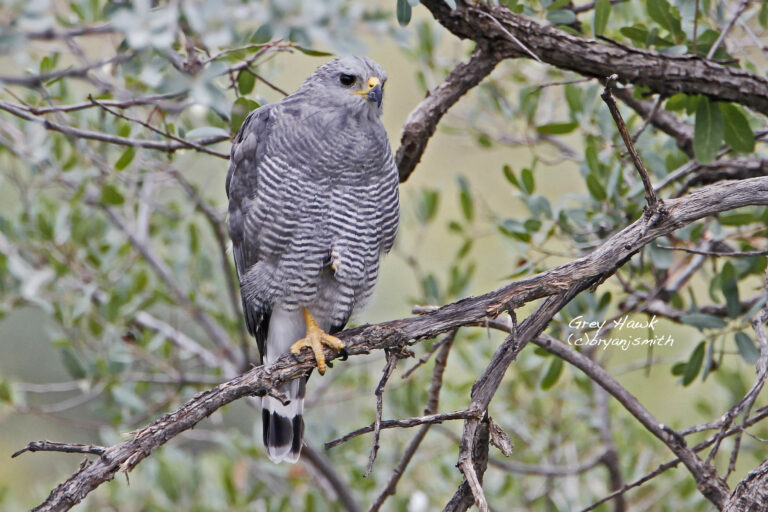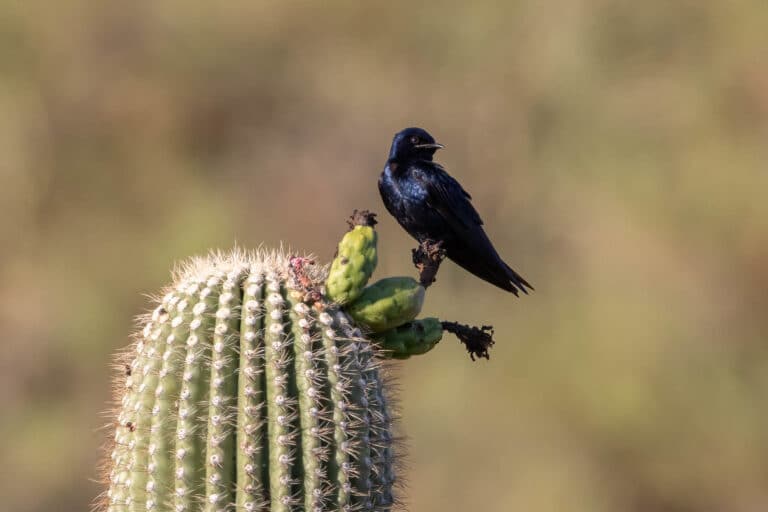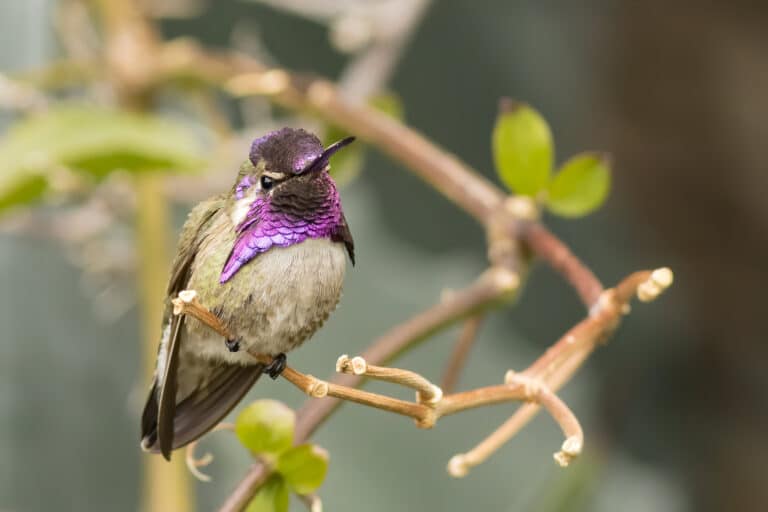Chances are if you’ve seen any hummingbird in and around Tucson, it was an Anna’s Hummingbird. This little emerald jewel with the magenta to rose-red gorget and head (on the male) is the most common hummingbird in Southeast Arizona year-round. Its breeding range was restricted to the west coast from northern Baja to San Francisco prior to the 1930s but now extends to British Columbia and east to Arizona. Anna’s Hummingbird has taken readily to urban areas and exotic plant species, and this seems to be a rare case where human development is contributing to an expansion of the range and population of a species. Some of the birds do migrate, although the details of these movements are still unclear. California populations may undergo a short post-breeding movement to higher elevations, while others may travel longer distances or not migrate at all.
Male Anna’s Hummingbirds are conspicuous in two ways: their sounds and their courtship displays. They sing more than any other North American hummingbird and their songs are learned and complex, unusual in non-passerines. Consisting of many syllables and possible combinations, their buzzy chur-ZWEE and dzi! dzi! songs are controlled and produced using an enlarged vocal center that develops in response to testosterone—females and non-singing relatives such as Allen’s Hummingbird lack this brain structure. Their displays also attract attention using sound as the male flies up to 130 feet, then drops suddenly in front of the perched female and lets out the “dive sound” at the bottom of his arc. This loud bark is produced by wind passing over the hummingbird’s modified outer tail feathers and is very similar to a squirrel call or the peep! of an Abert’s Towhee. On sunny days the dives are oriented so that the sun is reflected from the iridescent throat and crown directly at the female.
After mating, the female has little use for the male. She does all the work of constructing the nest, incubating, and caring for the young. Anna’s Hummingbirds nest in late winter through summer—look for their tiny, spider web constructions in almost any type of shrub, especially in lush, urban locations.
Image by Bryan J Smith




